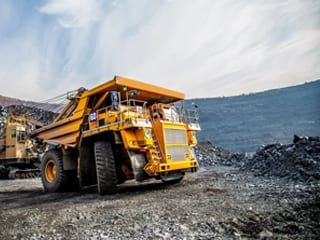Frequently Asked Questions ( Faqs )
What exactly is a modular ice machine?
Modular ice machines are ice generator units that do not contain any storage space and therefore require the installation on an ice storage bin or dispenser unit (bought separately) to function correctly. Modular ice makers offer the ultimate flexibility as the heads are designed to be compatible with a variety of different bin sizes and models, allowing you to customise your ice-making solution.
When to go for a modular vs a self-contained ice maker?
If you’re on the fence about whether to get a modular or a self-contained ice maker, consider that modular ice machines present several advantages:
Higher daily ice production: there is no arguing that a modular head will deliver more ice so if your business needs surpass 150kg of ice per day (with ice flakers being the exception), modular is what you’ll probably end up going for.
Mix and match at will: upsize or downsize your bin to produce precisely what you need and keep as much ice ready as you require. That way you can be sure your ice bin won’t go chockers on ya in the time of need.
When the modular head has reached the end of its functional life, you can reuse the existing storage or dispensing equipment with the newly purchased ice maker, and upgrade separately.
The drawback? While technology has been steadily edging towards smaller and more efficient models, modular ice machines and their storage bins still tend to be bulkier than their self-contained counterparts, which can often fit undercounter.
How much ice can a modular ice machine produce in a day?
A modular ice maker can produce anywhere from 100kg to well over a tonne of ice per day.
What volume should I go for?
Your ice machine should be able to meet your demand of ice when it’s at its highest, plus some. We recommend to include a 20% buffer to ensure you leave yourself room for growth or potential spikes in demand as, once you commit to an ice machine, you won’t be able to increase your ice production—short of purchasing a new one. For many businesses, peak season is summer due to thirstier, outdoors-happy customers, but it can depend on other factors, too.
Customer numbers: you’ve probably got a gut feeling that your business is busier at a certain time of the year, but how much busier? A fool-proof way is to check your books to see how many customers that’d be.
Temperature indoors: the lower the air temperature around the ice maker (and the water temperature), the less it has to work to freeze that water. It’s smart to place your ice maker in a spot where air flow, or air con, will help it out during those blistering summer months.
How do I choose the right storage bin?
That ice storage bins are just glorified eskies is fake news, folks. Today’s storage bins keep ice sanitary and ready for use for hours. You can even store pre-packaged ice in them. The configuration is usually stackable, with the ice maker sitting on top of the storage bin, which can keep anywhere from 100kg to more than 700kg of ice.
Choosing the correct storage bin for your modular ice maker is not tricky. Once you’ve picked your desired capacity, you need to find a model that will match your ice machine head’s size. For most manufacturers, standard heads are 22″, 30″ or 48″ wide (56cm, 76cm and 122cm respectively), often compatible across bin models. A conversion kit, or bin top kit, may be used to match bins with ice makers where small size differences arise.
You can have a peek at our selection of quality ice storage bins here .
Which factors should I consider when choosing a modular ice machine?
You’ve determined that a self-contained ice maker is what you want. Great, what’s next? Choose based on the following:
Ice shape
Regular cube shapes or fancy gourmet? Chewable nuggets or soft ice flakes? Manufacturers really do spoil us for choice here.
Daily production volume
Your ice machine should be able to make enough to cover your needs today as well as in a few years down the road.
Condenser type
Air-cooled condensers are cheapest and work best in well-ventilated areas. Water-cooled condensers can take on even the hottest kitchen, but they are not as environmentally friendly. Remote-cooled condensers are the quietest option but require a separate installation of the condensing unit, usually outdoors.
Features
What are your non-negotiable requirements? What about nice-to-have features? You can opt for a tried-and-true model or the latest innovation, engineered to make your life easier and save you time and money in the longer run.
What exactly is a self-contained ice maker?
Self-contained ice makers, also known as all-in-one ice machines or built-in units, are excellent entry-level ice makers. Just as their name implies, they provide both production and storage, all in one place. Using ice trays akin to those used at home (although made of metal), ice forms in the top part of the machine and then tumbles into the in-built storage bin underneath. A convenient one-stop shop for your icy needs!
When to go for a self-contained vs a modular ice maker
Ask yourself the following:
-
- How much ice will you need? Self-contained ice machines have a lower daily ice production, from low double digits to only about 150kg per day (with ice flakers being the exception). When requiring more, you should go for a modular unit.
- What about storage? Built-in bins can store up to 50kg at any one time, so again, if you’re after more, modular is the name of the game.
- What space can you play with? Self-contained units take up less physical space and can seamlessly fit either on or under the counter thanks to an overall height of less than 1m.
If you’re after a small-scale, compact, and convenient plug-and-play solution to your ice needs, a self-contained ice maker might just fit the bill. Otherwise, you might want to look into getting a modular ice maker instead.
What volume should I go for?
Your ice machine should be able to meet your demand of ice when it’s at its highest, plus some. We recommend to include a 20% buffer to ensure you leave yourself room for growth or potential spikes in demand as, once you commit to an ice machine, you won’t be able to increase your ice production—short of purchasing a new one. For many businesses, peak season is summer due to thirstier, outdoors-happy customers, but it can depend on other factors, too.
- Customer numbers: you’ve prolly got a gut feeling that your business is busier at a certain time of the year, but how much busier? A fool-proof way is to check your books to see how many customers that’d be.
- Temperature indoors: the lower the air temperature around the ice maker (and the water temperature), the less it has to work to freeze that water. It’s smart to place your ice maker in a spot where air flow, or air con, will help it out during those blistering summer months.
Which factors should I consider when choosing a self-contained ice machine?
You’ve determined that a self-contained ice maker is what you want. Great, what’s next? Choose based on the following:
- Ice shape
Regular cube shapes or fancy gourmet? Chewable nuggets or soft ice flakes? Manufacturers really do spoil us for choice here.
- Daily production volume
Your ice machine should be able to make enough to cover your needs today as well as in a few years down the road.
- Condenser type
Air-cooled condensers are cheapest and work best in well-ventilated areas. Water-cooled condensers can take on even the hottest kitchen, but they are not as environmentally friendly. Remote-cooled condensers are the quietest option but require a separate installation of the condensing unit, usually outdoors.
- Features
What are your non-negotiable requirements? What about nice-to-have features? You can opt for a tried-and-true model or the latest innovation, engineered to make your life easier and save you time and money in the longer run.
Are self-contained ice machines the same as manual load ice dispensers? What about countertop ice makers and dispensers?
Self-contained ice machines differ from manual load ice dispensers in that the latter will allow self-service by customers without any contamination risk at the push of a button or lever, but still require the staff to fill the unit with ice, therefore being potentially fiddlier than an all-in-one solution.
How to maintain a self-contained ice machine in full working order over time?
Quality ice machines are sturdy, steel-made affairs, however neglecting your ice machine over time can ruin it as well as interfere with the ice characteristics. If you don’t clean your ice machine on the reg, you leave common microorganisms such as bacteria, viruses, fungi, algae, yeast and mould room to thrive. So make sure you follow the manufacturer’s care instructions and clean it regularly (usually every 3 to 6 months) using an appropriate cleaner. We also recommend using a water filter to help prevent mineral build-up.










